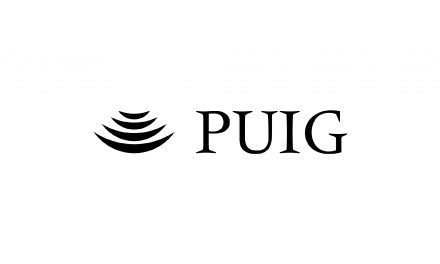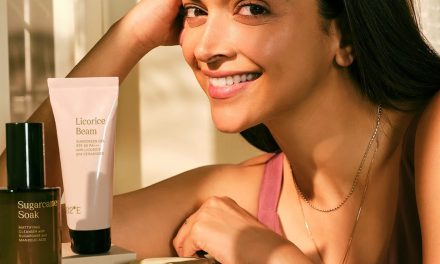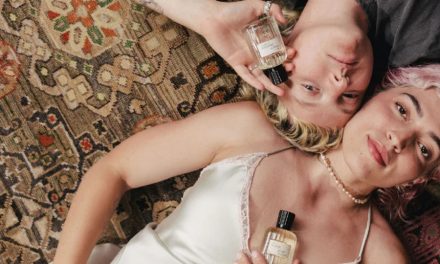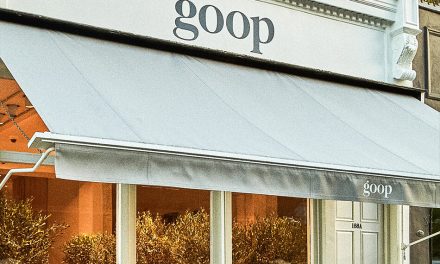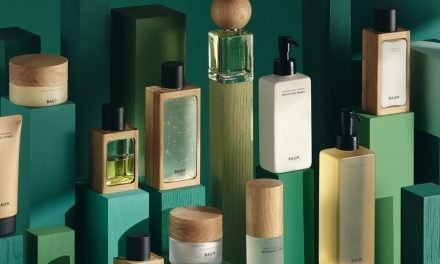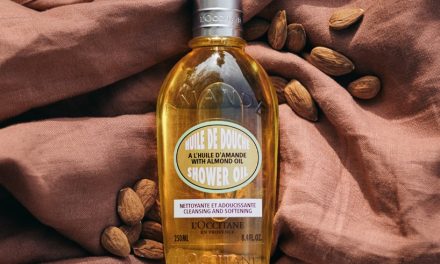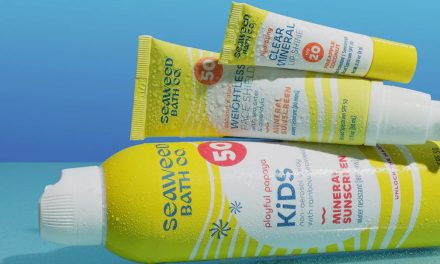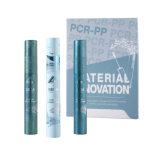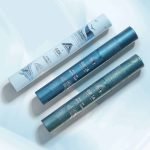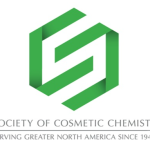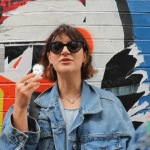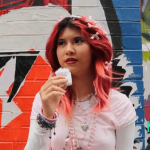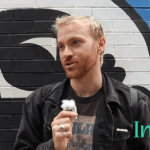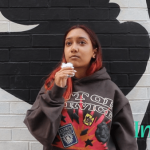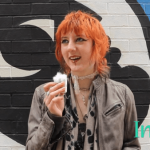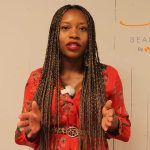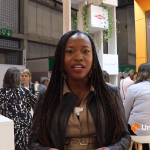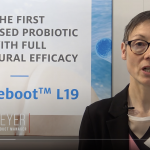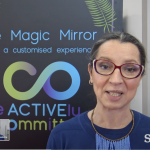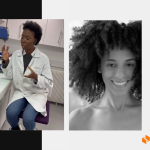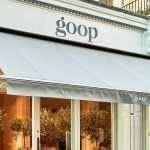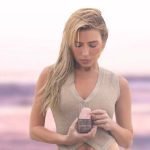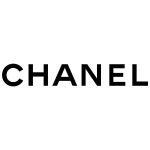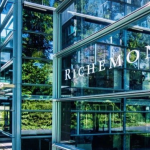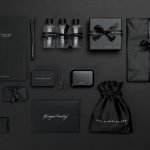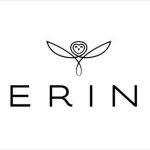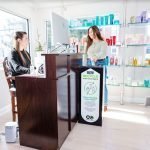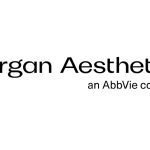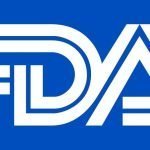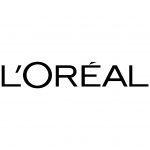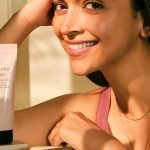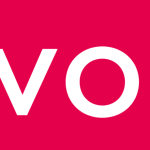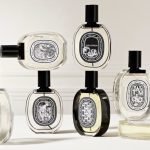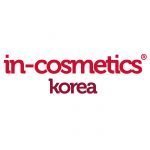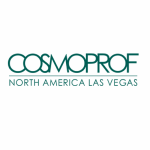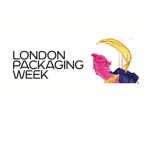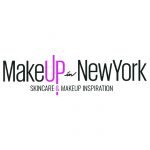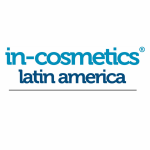
Open Podcast Transcript
Creating Cosmetics: Color Cosmetics
[00:00:00] Hello, and welcome to In Conversation With, the monthly podcast series brought to you by the team that produced the Global Cosmetics News Feed. This year’s theme is creating cosmetics.
siobhan-murphy–undefined-_1_05-31-2024_150359: This month’s topic is Color Cosmetics, and I’m your host, Siobhan Murphy. Over the past four years, the color cosmetics industry has evolved dramatically.
Consumer demand for innovation, personalization, and sustainability have led to a shift towards more sophisticated and eco friendly offerings. As manufacturers strive to merge aesthetic appeal with eco conscious practice, Where do the opportunities for growth and innovation lie? To help me answer these questions and more, let me first introduce you to this month’s panel.
Hello and welcome back to Mallory [00:01:00] Huron, Senior Strategist at Fashion Snoops, the global trend organization, and joining us for the first time, Justyna Justemski. Manager Sustainable Formulation and Nail Product Development at Avon and Kressel Sack, Product Manager at Visage Technologies, the developer of Arabelle, the leading provider of face tracking analysis and recognition technology.
Mallory, let’s start with you. What consumer challenges have fashion snoots been tracking and where are the opportunities for creating color cosmetic products in 2024?
mallory_1_05-31-2024_100359: Well, this is just such an exciting era for color cosmetics. We track all the new launches every month and it’s really interesting to be able to compare not just month to month, but year to year, and see where the shifts are happening. I think one major thing that we’re seeing as an opportunity for color cosmetics is the [00:02:00] skinification trend. This is not going anywhere. It’s only going to become more exciting. accelerated and more advanced within formulations, , but for those unfamiliar, skinification is the idea of infusing color cosmetics with these caring actives. I think just from the most recent crop of, Makeup launches almost, , a huge majority of them had serum in the name, a serum, mascara, serum, a foundation, serum, concealer. So consumers are really looking for these added benefits because not only do they want just the added value, but they want to cut down on their routines a little bit. They want to be able to, for example, just put a foundation on their face and have it deliver the same benefits that a serum does. And so I think we’re going to see continued opportunity there as well. I think, , moving on, a challenge and an opportunity in one is this idea of trend synergy [00:03:00] within color cosmetics. The Brent Ledless, TikTok aesthetic and, TikTok core, , trends that we see that are particularly huge with Gen Z, but also, all ages , of consumers as well, including millennials, Gen X, from cottagecore, et cetera. There’s a huge desire from consumers to match their current aesthetic or these viral trends with color cosmetics. And so the challenge therein lies to formulators and brands to, first of all, pick trends that work for them and to also position their product ranges and offerings to be able to, , rise to the occasion of these trends. Just looking at last summer with the tomato girl and strawberry girl trends that were very blush heavy, that was a great moment for, of course, brands that had these You know, glowing, very red based blushes that they could then market and spin that way. So I think, , a lot of brands are trying to anticipate these viral color cosmetics moments.
And, [00:04:00] carefully consider their product offerings to be able to, be adaptable to whatever trend might be coming up on social media. And lastly, , a huge challenge, but also again, a huge opportunity is the inclusivity conversation. We just had recently this huge, , drama within the makeup community with the euphoria foundation.
If you’re unaware, there’s a foundation that was introduced for darker skin tones. And, it was quickly shown that it was just, Pure black pigments. And, , this is really exposed, , that we’re living in different times in terms of consumer accountability and consumer education, because 10 years ago, you would not have as happened with this, drama, tick tockers who are cosmetic chemists, who looked at the ingredient breakdown, who looked at the pigments and said, this is not right. there was. Just not that level of consumer accountability and education. And now there is. And so I think, especially in terms [00:05:00] of creating inclusive color cosmetics, there’s a again, challenge and not, but also an opportunity for brands to, Consults with experts and to create really advanced, sophisticated formulations.
We see this, we see brands doing it really well. It’s obvious that it’s, something that, that can be done, but it’s just interesting that we’re still seeing, , missteps 2024. So it just proves that there’s a long way to go for inclusivity. But, I think there’s certainly a lot of opportunity there.
And trend synergy, Justina, is that a consumer challenge and an opportunity at Avon?
justyna-jastrzebska_1_05-31-2024_160400: Yes. , first of all, so thank you so much for having me on and I’m very exciting to being here for the first time. Yes, I’m totally agree, , in that part of the trends shared by Mallory. So the trends also, and What was my first [00:06:00] challenge, I observed that really cosmetic category, cosmetic products or market, it’s quite saturated. Yes, highly saturated and it’s quite challenging to standing, among numerous brand and products, but at the same time having a lot of time. Trends, new approaches, that’s also an opportunity and, still there’s a lot of space for, innovation. So together with evolving consumer expectations, need to, adjust rapidly as, cosmetic companies, cosmetic manufacturers Find the agility in product development for sure. , keeping up with trends, , as I said, they evolve quickly. and that really require constant innovation and adaptation. Having my company in mind and really focus on strictly on expectation of our consumers. I agree what was, mentioned before, by [00:07:00] Mallory that, it looks like our consumers, , really, want to have products. They help them look, let’s say, effortless or , for example, have the foundation that the of the makeup product at the same, the skincare product. Very great, example for that is our, makeup and care line, , and our product serum foundation that was really developed for a radiant glow with a skin caring ingredients. But of course the first role is the foundation itself that also represents somehow or cover the diversity and inclusivity of because it’s not only about the shade ranges.
Yes, it’s something more. So adding some transformative skin ingredients, like for the brightening, like vitamins or [00:08:00] antioxidants, of course, we can care also for our skin. And I think that, , I’m pretty sure that it really, , Like fulfill, expectations of our customers and, what is for me, and for our, , company, for Avon and what is very visible trend and let’s say need is the afford affordability of the products. Yes. That’s another, consumer challenge, to address, like consumer, needs for products to be more affordable , at the same time, efficient, good performing. It is mainly connected with, the effects of course, of the pandemics, of the, economic instability of increasing, unrest. So many consumers are looking now for, still very high performing, high quality products, but in affordable price. So at Avon, we really use our world class innovation [00:09:00] capabilities to, to develop, award winning, confidence boosting products, but at the same time ensure that, this is a beauty and accessible and affordable, , for all.
That’s very important , for us.
siobhan-murphy–undefined-_1_05-31-2024_150359: And at Arabelle, Cresco? Sat in a saturated market, What are the consumer challenges you guys are facing?
squadcaster-3bfa_1_05-31-2024_160359: Yes, thank you for question. I’m going to add more like a little bit technology perspective here. What I can expand a little bit on what Mallory and Justina brought up is that personalization is something that, that we see as a key challenges for the brand, how to tackle with their consumer because consumer now are demanding more and more personalized services.
Beauty solution and, like 80% of beauty confirmer consumers prefer actually brands that offer that, experience of personalization in their contacts. And we can see that even more and more, , consumers are more likely to purchase , products that, that have this [00:10:00] personalization, , embedded with the DNA of the brand that’s offering that. And even more like they are, they’re likely to repurchase when something is. connected to their shade or their preference, what they’ve been looking for previously in the color cosmetics market, there is also this like challenge and on the other hand is also an opportunity where I see that. Gen Z, who are driving this social, media, communication and using the content is that they want to use, some kind of personalization in terms of the rather different filters and applying color cosmetics on their face. And this is where we step in, where we see that. AR for shopping and automating the color cosmetics on the face are almost 88 percent of them are using it for makeup triumph.
So we can see that this is something that won’t distinguish very easily and it will be even more driven with brands going in [00:11:00] B2C direction in terms of the rising e commerce For sure, intensify this need for virtual trying before actually buying of the product from that side expanding on this inclusivity matters.
What we also see that finding the perfect shade remains like a significant issue where 70 percent of consumers actually have this difficulty in finding the right foundation shape for. for their, for their face. And is where, , different, application of AI, and AI tools can step in and somehow also together with the skimification trend that Mallory mentioned and Justyna as well, , Can be more provided and more accurate based on the scheme, skin condition that consumer has. So yeah, this would be very much in short,
siobhan-murphy–undefined-_1_05-31-2024_150359: So Mallory, what are the technical challenges have Fashion Snoops been tracking and where are the opportunities for [00:12:00] creating color cosmetic products?
mallory_1_05-31-2024_100359: I think the technical challenge is that there is such a consumer demand for a product to be everything all at once. They, again, there’s a desire for a serum like skinification product that is also high performing and long wearing, multifunctional, easy to remove, sensorial feel.
It’s really tough formulating because, the consumer demand is for a product that ticks all the boxes. And so how on earth do you formulate, , an eye shadow or a blush or a foundation for the consumer who wants everything? I think certainly, aligning with, , a specific product need is. A strong way to start. It’s also, , a challenge to create products that are adaptable to a wide range of consumer habits. We see new products be [00:13:00] launched all the time. And then on social media, you see them, not well received because they’re often, often is the case they’re being applied in a way that is not. How the product is meant to be used, and there’s a certain challenge in creating a product with a specific function, , and yet knowing, and yet seeing that product, being used by consumers in a different way. So how do you anticipate that from a technological standpoint? I think certainly, formulation, sensorial feel is still going to be a big, challenge in terms of creating, tactile formulations that have that element of play. But again, at the end of the day, the bottom line with consumers, and as was pointed out earlier, Just mentioned, affordable affordability and value is huge right now, and so the formulation has to deliver that it has to deliver that performance, and has to do what it says on the box. And so, , if a product promises 16 [00:14:00] hour where it better deliver a 16 hour where it’s waterproof, it better be waterproof. Consumers are highly, judgmental, and discerning in terms of formulations right now. And again, as I spoke to earlier, you have a huge, community of cosmetic chemists.
and experts who share opinions on these formulations across social media. And consumers are no longer, ignorant to what goes into formulating a product. They now know. And so that means the expectation is even higher. And so I think, to create products that are adaptable, , creating products with a formulation that has, , that has that performance, is key.
And also, trying to add that level of pleasurable feel, , quite often we see, formulations go viral that have that element of, A nice feel to them. Consumers are still gravitating towards that, it’s funny. There’s a lot of buzz right now for this, , [00:15:00] urban decay, bond foundation and just reading the product details, for that foundation.
It’s it speaks to exactly the challenge of formulating a product today because it’s a serum and yet it’s long wearing and yet it bonds with your skin and yet it’s easy to take off and it feels like nothing and it’s just perfectly emblematic, I think, of, the huge challenge of what consumers want in their products these days.
So I think more challenges here, but certainly opportunities if you get it right.
siobhan-murphy–undefined-_1_05-31-2024_150359: And at Avon Justina, what are the technical challenges and opportunities in the color cosmetic category that you’ve been tracking?
justyna-jastrzebska_1_05-31-2024_160400: So I can compliment here really on the, what’s that both Mallory and also Creshaw. So having, , in mind the Creshaw about the shades and, How to really,, identify all shades, across all skin types and tone and undertones. [00:16:00] again, , I agree that’s a huge synergy and, like the future for, virtual applications, yes, to really help with that. also starting from the beginning, what Avon did, , we identified really across the all types of skins, we tried, and we did that successfully, all types of shades that to cover the whole palette. So first, really, we have, skin tone, then skin undertone and all the shades, the whole, the range and having all together, we created a very great system across all our uh, palettes. foundations and concealer products to really and, to be comfortable for all our customers to, differentiate and then to really choose the best shade. Of course, I agree that then supplementing with some virtual apps can really help, to identify, but again, that can be also [00:17:00] challenging because how many shades we can mix, we can have, yes, they, for sure must be identified to be then developed and produced.
So that’s the first one. So let’s say, it’s more about, , the strategy and approach and preparation. The second the product itself. Again, I agree with this elements to combine everything. That’s a huge challenge. Yes, from the formula perspective and also from then process and manufacturing perspective, how to create. , and also we need to remember about the cost efficiency of the formulas because I mentioned before about this afford affordability. So all together, For example, our great product, again, the hydromatic lipstick with this hyaluronic acid core. That’s a great example, but it was a huge technological and formulation challenge. [00:18:00] We succeeded, but that’s, I think, a great example to show the demands of our customers now. Yes. to have them multifunctional, multipurpose and great performing products to address many needs, at the same time.
siobhan-murphy–undefined-_1_05-31-2024_150359: Indeed. So how does Arabella’s technology address different skin tones, Cresso?
squadcaster-3bfa_1_05-31-2024_160359: Again, I will, go from the technology point of view, what we already seen, , in the market development, like going into generative AI becoming much more broader accepted by different public and even beauty, as well, and color cosmetics. what we see here as a challenge is. Algorithm biases. Here again, a lot of times we see that, these biases or hallucination how it’s called today in the AI world is , they lead to inaccurate recommendation for these diverse skin tones and, , and we have to be aware of [00:19:00] this, which is a real challenge and, We have like ongoing research and constantly building our database, to have this more inclusive AI algorithms that, that will provide more diverse, results, and have diverse datasets, included, when we are training different models.
, to have better recommendations for the beauty industry. And this is just one perspective, because then, okay, here, there is a data privacy. Because always when you have some kind of model that you are bringing into ai, then you have also data that is always a question like, , how accurate this data is, or how this data is. Protecting the privacy of the people that are giving this data and, , how can you be assured that my data that I input into the system, , will be protected so nobody else can, access this? And I see that Not only I, but is a lot of this market research is around 85 percent of consumers are more likely to engage with the [00:20:00] brands that they trust that they protect these data. And I want to mention the brand, but, , you probably understand when one big, brand, builds on a whole campaign based on security. , when you’re, when we are talking about the. Hardware, as such, and there is the last point I would want to mention is that integration of different AI, solution within the companies, where up until now, this was like a luxury, treat only for the big brands and now more and more smaller brands are building up this Sophisticated AI tools, and bringing the cost of big, , let’s say players on this market and technical requirements, and they have, let’s say. Troubles with integrating this into the system of their own, like connecting it with the different e commerce solution, connecting it with different product management solution, et cetera. And this is all something that is. From one point, a challenge and from another point, , like also opportunity on the market where we see, [00:21:00] potential to bring more, democratization , in this sense that we bring to all potential clients, this, AI solution that fits to the color cosmetics market very well and to their needs. Yeah, this would be my answer to this.
siobhan-murphy–undefined-_1_05-31-2024_150359: Hmm, indeed. So Mallory, what are the environmental challenges have fashion snoots been tracking and where are the opportunities for creating color cosmetic products?
mallory_1_05-31-2024_100359: This is also, in addition to the consumer trends, we mentioned at the beginning, this, sustainability aspect of color cosmetics is such an exciting area for us to track. , we’ve seen amazing. growth over the past few years. But I think the exciting part about it is that there is so much opportunity within, making the color cosmetics that we use every day more sustainable. I think the first challenge, , for sustainability within [00:22:00] color cosmetics is obviously packaging and plastic packaging waste. We’re seeing Many brands try and tackle, reusable packaging. We’re seeing a lot of, for example, mascara brands that have a reusable, system where they, you get sent new refills for the mascara, but obviously that is not something with wider, , consumer, , adoption right now, but it’s nice to see some of these initiatives, , at least, lasting , and creating, an interesting impact within the market.
So, of course, the biggest challenge , is going to be the packaging factor, but don’t want to discount the formulations themselves. Obviously weaning the industry off of, unethical, unsustainable, , actives, palm oil and palm oil derivatives, , and many others, many other, actives as well, I think is going to be huge. I think, of course, this is where [00:23:00] biotechnology has the opportunity to create massive impact, in creating, , synthetic alternatives to ingredients that the cosmetic industry has relied on. , for decades is going to be crucial. , there are so many products that , actives and ingredients and derivatives that are intrinsic to products we use every day and yet are really, , not great for the environment either in their production or their harvesting, what have you.
So I think biotechnology. is going to be key for finding these for animal and , plant formulations. I also think ethical options for animal based ingredients is another one. We’ve been tracking this sort of resurgence of animal based products, which is interesting given the strong hold that all vegan formulations have had. We’ve now seen, for example, , just recently Glossier has returned [00:24:00] to its original formulation of its bomb. com. , , it had beeswax and lanolin when it first launched. And last year they switched it over to a vegan formulation, which consumers hated, which is interesting because we know that consumers, don’t do want vegan formulations, but it’s just another example of how sometimes consumers say one thing and mean another.
It’s very difficult. And so I think finding better ethical options for animal based ingredients that are cruelty free is going to be key. I think finding better plant based pigments., Is going to be key as well, , we know that so many beautiful pigments come from the natural world, but being able to find pigments that are sustainable and easy to create, , at scalable, , size in a lab based , but are also plant derived, , to consumer desires also a huge challenge.
There’s a huge opportunity here, but I think. Tackling [00:25:00] the packaging is going to have to come first, because we know that is , the biggest form of waste. , but again, not to discount the formulations inside the products themselves.
siobhan-murphy–undefined-_1_05-31-2024_150359: So how is Avon addressing the environmental challenges in the color cosmetic category, Justine?
justyna-jastrzebska_1_05-31-2024_160400: So Avon, addressing both packaging and the formulation from our perspective, maybe are very challenging, but maybe packaging is more, more easier, or we are more advanced with the packaging now, as 80% of our packaging is already recyclable, or compostable. I’m talking here not only about makeup, but in general. We aim to reach, 100% by 2030. Again, we are looking for to reduce water and, , switch for, reduce, , energy for manufacturing processes and also water. So we partially switched even, to [00:26:00] natural, gas in Poland because still we have some, , Coal powered, electricity, , parts. So that’s something really we are addressing.
So all scopes, let’s say of carbon one, two and three, three is more about like packaging and the ingredients itself. And of course we are looking for a more sustainable solutions, , like also some paper elements, , maybe glass also. That’s something we are really addressing very well here and regarding the, , formula, I think that, to be very honest, makeup category, it’s the most challenging one from all categories we have.
It is because it is, , very much about also the performance of the products and the ingredients that are like heavy, like carbon intensive, for example, or they are not biodegradable. are responsible for that properties like a long lasting [00:27:00] or effect or water resistance or waterproof claims. So, , in many products like lipsticks, foundations, also, , somehow also related to regulatory driven changes or ingredients.
I’m thinking here about silicones. That’s a really huge challenge, but of course, we started, we continue to address all this, say offenders. we are tracking, critical materials and now, around, I think, 92 percent of our palm oil is, , and is, of course, tracking, , in the traceability program. And it’s a part of, , as I said, critical materials together with MICA. It’s more about human rights also that we are tracking. So , we are monitoring both like really focusing on people and on the planet also. And of course, really would like to focus on [00:28:00] and really, for makeup, what is very important, of course, all products, but lipsticks , are something that we are really want to focus on and address some ingredients that are like have an impact on climate change, land occupation. Happy that now there are available some tools like life cycle assessment tools where we can observe which ingredients are the main offenders. what we should address first. So that’s very helpful. And having more and more data also from our suppliers of raw ingredients working together, we can, really , address more and more, sustainability.
Um, What is very surprising about this, , vegan, , that’s something I didn’t heard before about this company working with beeswax mainly. So that’s really interesting. And about the cruelty. So our main, focus [00:29:00] now we are continuing and we are almost finished. That we are like now, , certified , for most of our products with, really complete, this year, in the middle of 2024, we are addressing to complete bunny certification. , of course, Avon believes that testing on animal is unnecessary. We always, have been advocating for alternative methods for testing both cosmetics and raw ingredients. In 2023, we were delighted that Creality Free International a Lipping Bunny certification to our fragrances, Care NU and make up ranges. So that’s almost whole portfolio that we are addressing to complete mid 2024. So that’s, our main focus also.
siobhan-murphy–undefined-_1_05-31-2024_150359: Indeed. And Cressel, two questions really. What are the [00:30:00] environmental challenges using AI for cosmetic companies and how can AI address the environmental challenges for these companies?
squadcaster-3bfa_1_05-31-2024_160359: Yeah, here, Mallory again, and Christina already said quite a lot, and I would just like to expand, , in one, , area with where we are tackling and see when the brands are coming to us and talking about the environmental changes. So we are mostly looking at from perspective of waste management and overproduction and unsold inventory, which actually leads to significant waste.
So we know that beauty consumers prefer more and more brands that have these sustainable practices. Not green washing practices, but they are really standing up for, , land based, pigments and, , sustainability packaging and, and similar. And we see that the brands are still struggling with this waste management and, , predictive analytics.
that comes from [00:31:00] the AI, which is the, is potentially opportunity for more and more brands are acquiring, they can optimize this production to minimize waste. And this connects to the like first, challenge and opportunity, which connects to the personalization part, where brands that are personalizing more towards the consumer and have AI to forecast demand.
They can be. With this type of activities reduce our production said that it can be done even more by 20 percent from some research agencies For example, I saw it in the airports when was flying that Some of the makeup shelf, let’s call it like this I saw that there are less and less testers there and focusing on this virtual technologies that can show you, okay, this is how I can look in total if I apply this product.
And this, of course, have impacted the waste. And, also by, accuracy, providing [00:32:00] this as close as possible to the real, effect of the color cosmetics on the people’s, , overall look, this can lead up to, , fewer product returns because when it’s matches , what would be in the real life, there is a less possibility that the customer will return this. So yeah, this is the, that we see in this environmental change. So I won’t bring the, this part where, , packaging waste and everything and, ingredients , can feel here. So, this is some sort of how we see it from the AI perspective.
siobhan-murphy–undefined-_1_05-31-2024_150359: And thinking about waste management, Mallory, what regulatory challenges have FashionSnoops been tracking and where are the opportunities for creating color cosmetic products?
mallory_1_05-31-2024_100359: Well, it’s kind of a patchwork system we have the globe, , within beauty because of, there’s a distinct lack of international, , agreed upon regulations. , we have some countries that [00:33:00] whose standards are extremely, strident and precise. And then we have Countries like the U.
S. where, , it’s up to individual states for the large part to, say what they want to implement in terms of regulations, just zeroing in on the U. S., we’ve seen California take a really active interest in beauty industry regulation, to, to mixed results, but , it’s interesting that, there, They’re looking at, potentially toxic ingredients within beauty products, and they’re stepping up at a state level where the federal level has not stepped up. so I think certainly, . There needs to be regulation that, , forces change within the industry, not just for, ingredients that are potentially unsafe for consumers, but I think this really ties back into, the environmental challenges in terms of, regulating, what ingredients be [00:34:00] used anymore.
I think, we’re at , a turning point or crossroads in the road, so to speak, for beauty, where I think there has to be some harsh regulation in order to enact change. And , I don’t, Think that will happen, but I think, , certainly there are some good actors within, , the global beauty oversight committee that , can help make that happen. it’s tough because you don’t want to punish brands who are, behaving in good faith and who may be using an outdated ingredient, but, they’re trying in other ways, so you don’t want regulations to feel punitive. or to punish good faith actors. But I think, speaking to the oversaturation of the beauty space at the moment, within, the fast fashion version of beauty brands that we’re seeing, , the high level of waste and overproduction of beauty products, I think, , regulation could help intervene with some of that, [00:35:00] and create some guardrails at least that we’re not, from an environmental standpoint, absolutely, filling global landfills with, , half used beauty products.
So I think it, it’s tricky because there, there’s a distinct lack of unification, , from a global perspective. , so I think there just needs to be a massive wide sweeping change.
siobhan-murphy–undefined-_1_05-31-2024_150359: And thinking about unification, Justina, Avon is a global company. So what are the regulatory challenges and opportunities for you guys?
justyna-jastrzebska_1_05-31-2024_160400: Yes, we are global. , and that’s very tricky and difficult because of lack of this unification. So our authority, like our, say, regulatory body that we are following, is European Union our, , one of our main market. It’s, , Europe or The second it’s, , now, , LATAM, and AIPAC.
Yes. So that in mind, [00:36:00] there are somehow different, but, , European Union is quite restrictive one. So we are following that one , to fulfill all these requirements. And that’s a lot. It’s a lot. Yes. We call that like a regulatory tsunami that is coming. It’s not only for makeup, of course, it is for all products, but is very important for makeup from our perspective mentioned, it’s this microplastics and that many.
ingredients still in color cosmetics, , are in that bucket. And they are quite challenging because they are like functional and, from chemical point of view, very complex one, very often difficult to replace and have find similar, , performance or, in the perspective of claims, the same efficacy, , and also comparing the cost and, let’s say the, universal usage, yes, that it can, one [00:37:00] ingredients for example, can be used in many formulations, , what we observe that for the particular types of products like, or mascaras, or, , foundation, or lipstick, or, , from other categories also, we need to use a different one.
So also from Company raw ingredients strategy point of view portfolio management. It’s also quite challenging. So something, , we really observe another one, of course coming and it’s very close. Yes the silicon cyclomedicine Regulation so again, very a lot used In past and still in cosmetic in makeup products So that’s, I think, , let’s say to main, I already told that’s something regulatory, but also, more our, internal and targets about, not, avoiding. or not [00:38:00] using at all ingredients that were tested, on animals. Of course, it’s also about the regulatory, but, we are about the certification, we already have it. that’s that. And very, the next one, the great example, it’s, the regulation about the deforestation or protection to not, to, destroy a rainforest.
And, , it’s mainly about the palm and the coconut. Coconut. Again, another regulation that needs to be, , tracked and followed, , not to use ingredients, , palm derivatives, which is a lot in , many ingredients, that were, cultivated, or agricultural on this, let’s say, , or, not properly, areas.
siobhan-murphy–undefined-_1_05-31-2024_150359: Indeed. And Creso. For AI companies, what are the regulatory challenges and where are the opportunities in color cosmetic [00:39:00] products?
squadcaster-3bfa_1_05-31-2024_160359: Yes, I like this term from just being a regulatory tsunamis. Yes, it’s also, from that perspective, we are also dealing with, uh, EU AI act, for example. There is a need for this compliance navigating this very, different regulation across different regions is really complex. , and we really, from perspective of AI company, we really like that this.
Usually, , EU part is that the drives and wants to behave , proposing one common standard, which, which is the opportunity for all of us working in this beauty tech, , area, that will simplify, , let’s say lives of the companies, like not. Punishing, , the companies for doing their work, but actually helping and regulating how to treat, each businesses equally and giving the value for the businesses and, but not, let’s say, burdening , the consumers, , or over protecting, the area of, giving the [00:40:00] information, , that consumers anyhow would want to give. in terms of the getting this personalized, advice. So this data protection, and ensuring this compliance, , and regulation like GDPR , for us is critical. And, yeah, giving the that the rise of AI driven personalization is something that, we will see much more and more from different brands in cosmetics industry. , and this can be also my. With, let’s say particular law, like you, AI at that, that will somehow also, regulate us, but also the beauty industry as well, , in that sense, , in terms of the data. Yeah, this is something that we are faced, with the question from the brands and also like ourselves, like where and how to keep the data, how to have this. data, , that is, compliant with the different, states , that are pushing for their own standardization, and bringing in their own laws, which is [00:41:00] actually hard to follow. And, , this is being dealt with, case by case for each of the clients that we are working with. , and the market that we are serving.
siobhan-murphy–undefined-_1_05-31-2024_150359: Indeed. And thinking about this very complex dynamic market Mallory, can you describe the future of the colour cosmetic market in three words?
mallory_1_05-31-2024_100359: I think the three words I choose would be skinified, sustainable, and diverse. Skinified because I think we’re going to continue to see this move towards products that, eventually will no longer be able to be classified as either color cosmetics or skincare. They’ll just be true hybrids. I think sustainable because that is, I think, the biggest aspect of creating a viable industry going forward. And diverse, again, as has been discussed, there’s lots of opportunity to create a more inclusive, market for [00:42:00] all consumers. So I think that’s where I would like to see.
siobhan-murphy–undefined-_1_05-31-2024_150359: And for you Justina, describe the future of the colour cosmetics market in three words.
justyna-jastrzebska_1_05-31-2024_160400: For me, it would be first. still affordable. Yes, that would be that word because in today’s difficult economic and times, with really inflation, we can observe some change. Changes in shopping habits, especially after the pandemics, maybe we buy less in a different way. We save some money or we are afraid to spend more money. So more and more customers are looking for high quality, well performing products, but with a good price at the same time. The second would be, This multipurpose I would say, but this skinification element is inside. Yes, and at the same omni channel so available across all, all let’s say, , sales model. We [00:43:00] retail e commerce and, , digital. So that’s something, Avon is addressing now with our traditional, representatives model, but also we are open for more digital and And, So multipurpose. So as I said, this, not only makeup, but moisturizing and the aging, good looking both at camera in front of camera in the reality.
So all this, aspects. Also male cosmetics here, I would add growing, for makeup. And the last one would be, of course, sustainable. So clean, ethical, sustainable products, both for formula and , for the packaging. Recyclable, refillable, the best, Maybe some disappearing packaging and that’s are some I know, studies and trials on that also to looking for such a, packaging. I hope that’s our future also. and [00:44:00] promoting really biodiversity, circularity. Ingredients, , working very closely across all supply chain to, to get, better and better raw ingredients, tracking them, and also at the same time looking for, , human rights, that would be the best. So I, would be the fourth one, but I really like, I found, I’ve heard somewhere sophisticated simplicity. I think something combine everything because to be simple, not to harm environment and To, of course, fulfill all the requirements of our customers to be still beauty products, sophisticated. That’s for me.
siobhan-murphy–undefined-_1_05-31-2024_150359: Lovely. And Creso, can you describe the future of the colour cosmetics market in three words?
squadcaster-3bfa_1_05-31-2024_160359: Oh, very hard, but I will try. So yeah, when I would pick, [00:45:00] three words, it would be personalized. Definitely sustainable. As you can hear that also from Mallory and Justina, the last one would be, inclusive. in terms of personalization, we see that A. I. And machine learning will drive this hyper personalized experience you can’t have these touch points the skinification trend and this multipurposy in total because the consumer will expect something that it to be, adopted. my personal, condition or, overall look, that I want to achieve. yeah, this would be tailored to individual needs and preferences, , here. So personalization is definitely a trend that, that we can expect to evolve even more in the future in terms of sustainability. Yes. We are approached by different brands, having in mind this eco friendly practices, in terms of the packaging and overall [00:46:00] practices that they want to have in brick and mortar store together with the only channel, , On the online stores, and how they source the ingredients and communicate this through some kind of virtual assistance and chatbots, providing different solution here.
And how do they also source the energy that can provide and feel the, , AI component within their own system. So sustainable practices are something that we need. I will see. I will predict that more and more will be focused here, and it will diverge in all areas we need to be planet conscious at the end point as a consumer and as a businesses and the last one would, which I said, is inclusive.
So this diversity moment, and how can we tackle this to eliminate this biases off algorithms and all the data labels that are provided this diversity, all people on this planet. So we can have this diverse [00:47:00] ranges of skin tone and types, which can be catered to, with specific need for that particular person.
So, yeah, I would say that this would be, three words.
siobhan-murphy–undefined-_1_05-31-2024_150359: And with that, I would like to thank my guests, Mallory, Justina and Creso
for joining me today and to you for listening.
Over the past four years, the colour cosmetics industry has evolved dynamically. Consumer demands for innovation, personalization, and sustainability have shifted towards more sophisticated and eco-friendly offerings.
As manufacturers strive to merge aesthetic appeal with eco-conscious practices, This month’s panel: Mallory Huron, Senior Strategist for Beauty & Wellness at Fashion Snoops, the global trend forecasting agency.Justyna Jastrzebska Manager Sustainable Formulation & Nail Product Development at AVON. Kreso Sach, Product Manager at Visage Technologies . The developers of Arbelle the leading provider of face tracking, analysis, and recognition technology. Discuss where the opportunities for growth and innovation lie.


